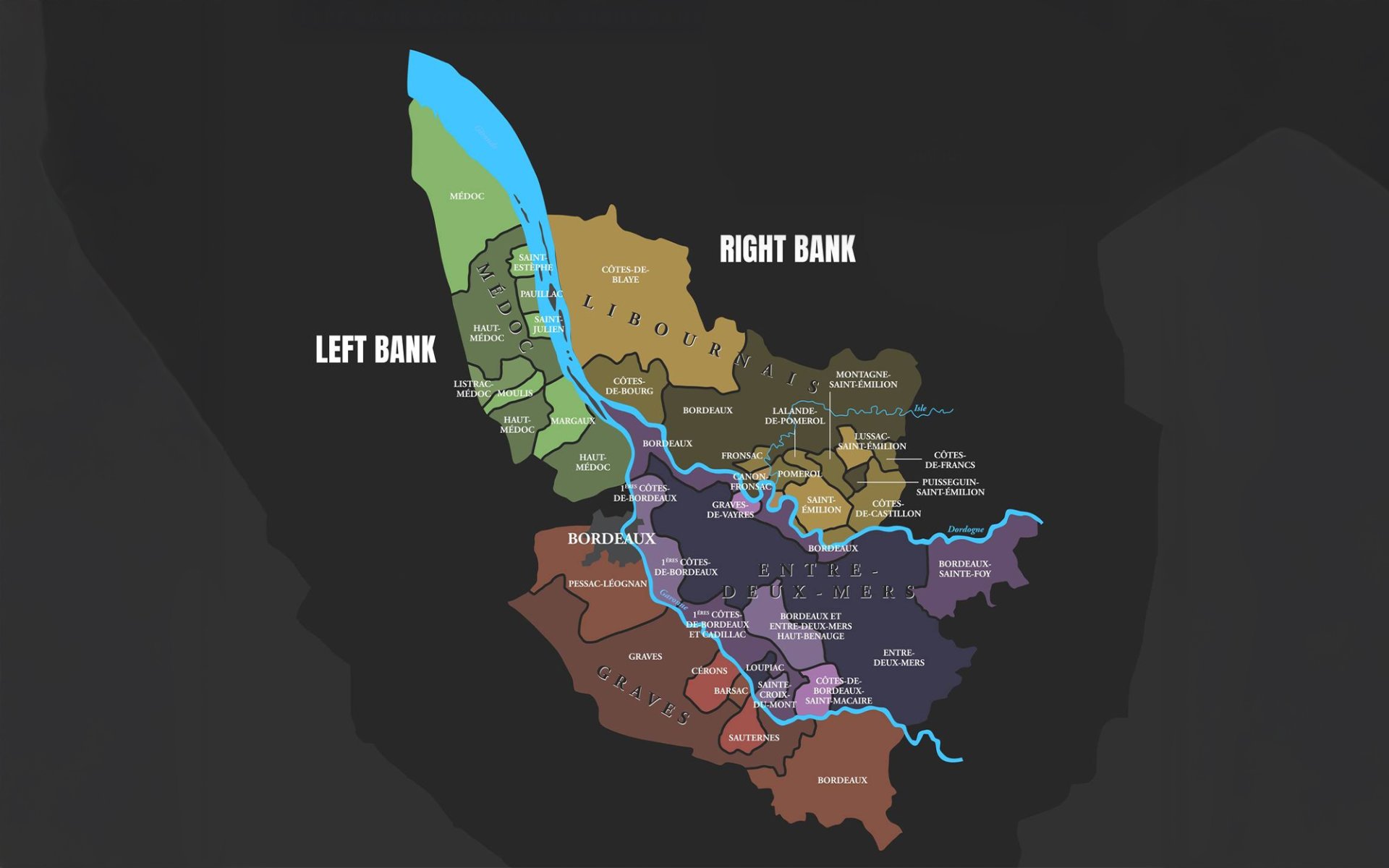Bordeaux : Left Bank vs. Right Bank

Bordeaux is one of the world's most renowned and historic wine regions, nestled in southwestern France. Its allure lies not only in its long history but also in its distinct division into two main banks: the Left Bank and the Right Bank, separated by the majestic Gironde Estuary. This geographical split isn't just about location; it signifies completely different wine styles, flavors, and identities. Today, Rimping Supermarket will guide you through the intricacies of these two banks, helping you choose the perfect Bordeaux wine that matches your palate.
Understanding Bordeaux Geography
The Bordeaux region is where two major rivers, the Garonne and the Dordogne, converge to form the main estuary, the Gironde, which then flows into the Atlantic Ocean.
- Right Bank: Geographically, the area to the north and to the right of the Gironde Estuary is referred to as the "Right Bank."
- Left Bank: Conversely, the area to the south and to the left of the Gironde Estuary is known as the "Left Bank."
This division by the estuary is crucial, as it doesn't just separate physical areas but also influences the soil composition and microclimates, which are key factors determining the wine's style.
Key Differences: Soil and Grape Varieties
The distinct soil characteristics and terroir are at the heart of why wines from these two banks boast vastly different flavors and styles:
Left Bank
- Soil Characteristics: Features relatively flat terrain, predominantly characterized by gravel and limestone soils. These soils offer excellent drainage, and the heat retained by the gravel helps the grapes ripen thoroughly.
- Primary Grape Variety: Ideally suited for cultivating Cabernet Sauvignon grapes.
- Wine Style: Wines from the Left Bank are typically full-bodied, complex, high in tannin (providing a drying sensation on the palate), and have a firm structure. This makes them ideal for long-term aging; the longer they age, the more complex and nuanced their flavors become. They often feature notes of black fruits (like blackcurrant), cedar, tobacco, and mint.
Right Bank
- Soil Characteristics: Primarily consists of clay soils, which retain water more effectively than gravel.
- Primary Grape Variety: Best suited for growing Merlot grapes.
- Wine Style: Right Bank wines are generally softer and more approachable. They exhibit prominent aromas of red fruits (such as cherry and raspberry) and possess softer tannins compared to Left Bank wines. Common notes include chocolate, plum, and herbal undertones.
The Bordeaux Blend: A Harmonious Combination
While the Left Bank and Right Bank have distinct primary grape varieties, both sides frequently incorporate other grapes into their wines, a signature characteristic of Bordeaux wines known as a "Bordeaux Blend." Common secondary grape varieties used in these blends include Cabernet Franc, Petit Verdot, and Malbec.
In recent years, some Right Bank vineyards have begun increasing their use of Cabernet Franc in blends, aiming to add freshness, structure, and aromatic complexity to their wines.
Prominent Estates and Their Banks
Left Bank : A Hub of World-Class Red Wines
Left Bank wines have a long-standing reputation as some of the world's leading red wines. Their distinctive and complex flavors make them highly sought after by wine collectors globally. The majority of high-value and critically acclaimed wines originate from the Left Bank, particularly from key appellations like Médoc, Pauillac, Margaux, and Graves.
Notable Premier Grand Cru Classé (First Growth) Châteaux from the Left Bank include
- Château Lafite Rothschild
- Château Latour
- Château Margaux
- Château Mouton Rothschild
- Château Haut-Brion
Beyond red wines, the Left Bank also produces a world-famous sweet wine, Château d'Yquem, from the Graves region.
Right Bank: Distinct Quality, No Less Impressive
While perhaps not as globally renowned for "Grand Cru Classé" red wines as the Left Bank, the wine production on the Right Bank is of equally high quality, simply with a different style. Most of its wines are produced in key appellations like St-Émilion and Pomerol.
Famous Châteaux from the Right Bank include
- Château Cheval Blanc
- Château Pavie
- Château Ausone
- Pétrus: Considered one of the world's most expensive and highly coveted wines.
- Château Le Pin: Extremely rare due to its very limited production.
Choosing Your Perfect Bordeaux Wine
Understanding the differences between the Left Bank and Right Bank empowers wine enthusiasts to choose a wine that aligns with their preferences by considering:
- Desired Flavor Profile: If you prefer wines that are full-bodied, highly tannic, and suitable for long aging, look for Left Bank wines (Cabernet Sauvignon-dominant). If you prefer softer, more fruit-forward, and approachable wines, opt for Right Bank wines (Merlot-dominant).
- Reputation and Critic Scores: If you're interested in world-class wines or highly-rated bottles, this information can guide your decision.
- Occasion: Some wines are perfect for special occasions, while others are ideal for everyday enjoyment.
Ultimately, Rimping would like to remind you that "a good wine doesn't always have to be expensive, and an expensive wine might not always suit your taste." The best wine is always "the wine you enjoy." So, have fun exploring and discovering the Bordeaux style that you truly love!


